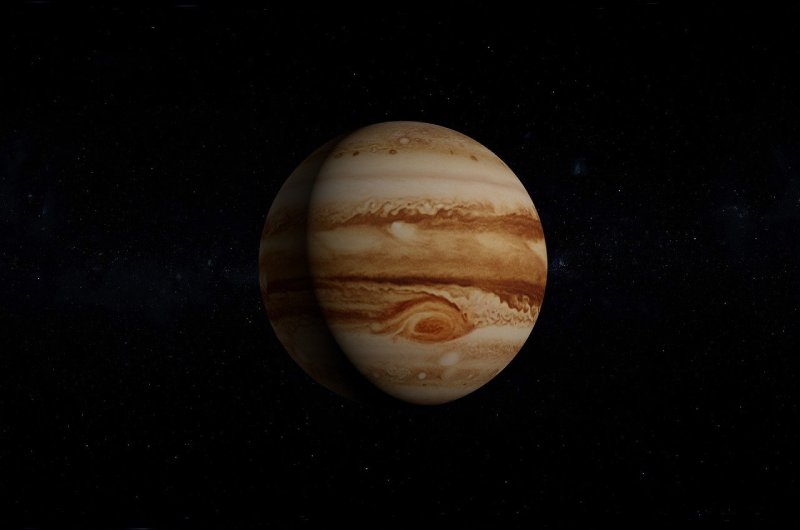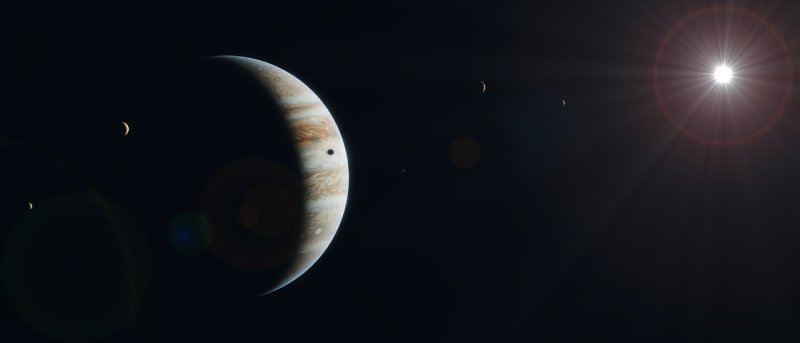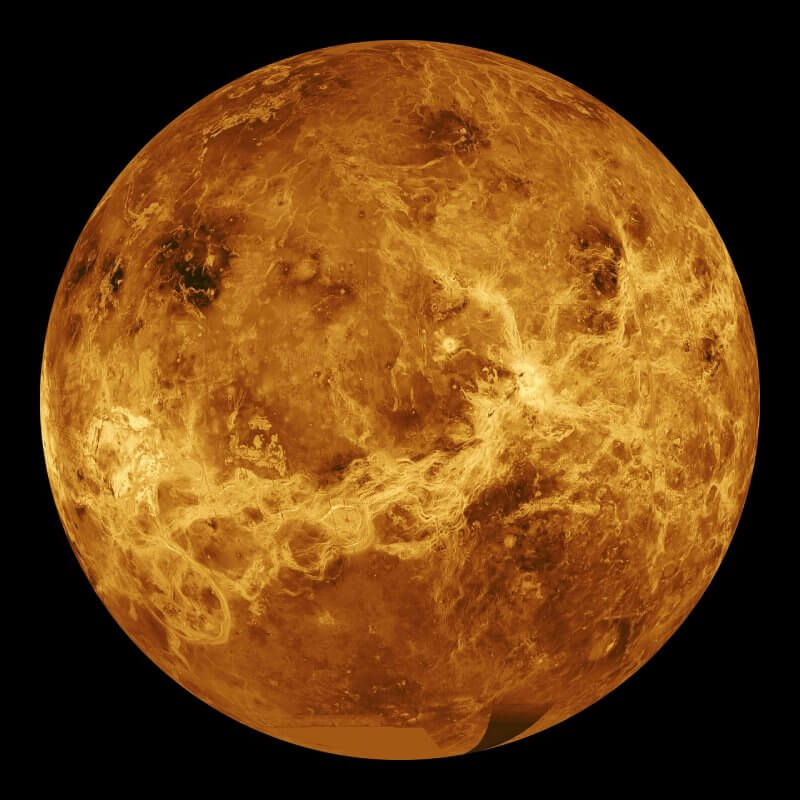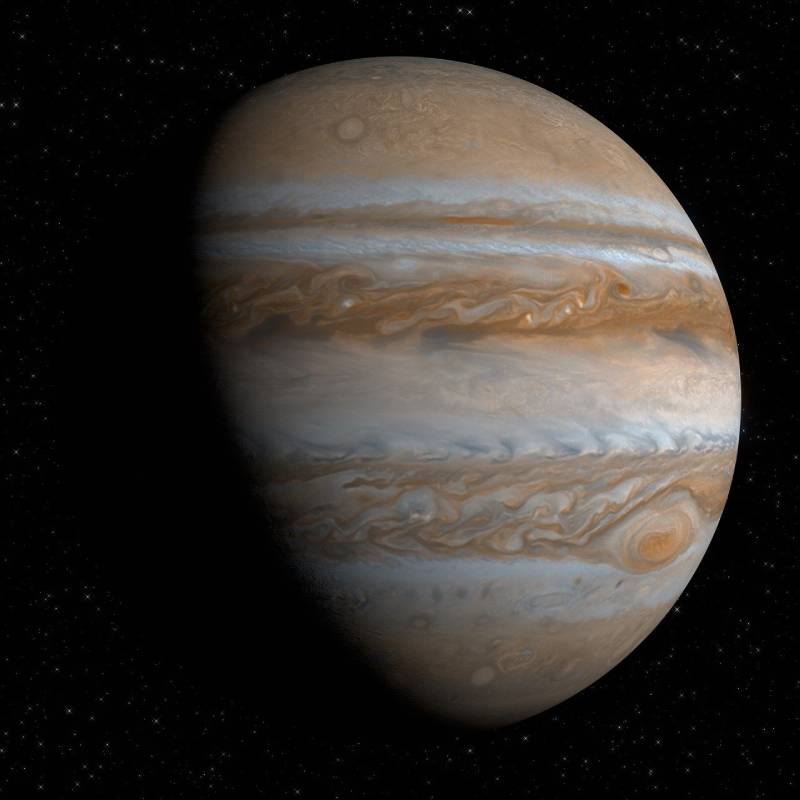Jupiter is one of the brightest planets in our solar system. But, why? Why is Jupiter so bright? Jupiter tends to be more bright because of its size, opposition, composition, and proximity to the Earth and the sun.
Jupiter can outshine all of the stars in the night sky except for the brightest star – Sirius. Jupiter is one of the most identifiable objects in the sky and is much like Venus when compared to brightness.
Although many people know about Venus and its illuminating features, few know the reasons that Jupiter can be seen from Earth even though it is well over 400 million miles away!
Learning About the Brightness of the Largest Planet in the Solar System
Jupiter is known for being the largest planet in our solar system and is most distinguishable by the giant red dot (a storm that has been observed for over 300 years). Scientists have been studying the mysterious red dot for many years, and they hope to continue to make discoveries.

Another characteristic of Jupiter that has intrigued scientists is the fact that Jupiter can be seen from Earth even though it is millions of miles away. They have wondered about its illuminating properties and have sought to discover the cause of the brightness.
Let’s look into the reasons that scientists believe why Jupiter is so bright.
Looking at the Colossal Size of Jupiter
Jupiter is the largest planet in our solar system followed by that of Saturn. Jupiter has a diameter of approximately 86,881 miles, while Saturn is roughly 72,367 miles. So, Jupiter is roughly 1.2 times larger than the next largest planet. This planet is huge! Jupiter’s diameter is approximately 11 times that of Earth!

Such a large size means that it is going to reflect a significant amount of sunlight compared to other planets. The reflection from the sun makes it appear very bright – which is one of the reasons that we can see it from Earth.
Although Jupiter is not the closest to Earth, or the sun, due to its massive size, it doesn’t matter. Since it covers such a large surface area in space, we see it from Earth. Saturn (the second largest planet and closer to Earth) is harder to see because it is much dimmer than Jupiter.
Investigating the Reasons Behind Jupiter’s Reflectivity
Jupiter has an atmosphere that is mostly made out of hydrogen and helium. Both hydrogen (about 90%) and helium (about 10%) are reflective gases. The combination of hydrogen and helium gives Jupiter a bright appearance when it is observed by us on Earth.
Jupiter is also composed of many things that make it more reflective such as:
● Other Gases: Not only is Jupiter mostly composed of Helium and Hydrogen, but Jupiter is also made up of methane, ammonia, water vapor, and various hydrocarbons.
● Clouds: Unlike the clouds that we have on Earth, Jupiter has clouds that are composed of various gases. When the sunlight hits the clouds it is instantly reflected into space.
● Ammonia Ice: Residing in Jupiter’s upper atmosphere lies ammonia ice crystals. The crystals scatter the sunlight and increase the reflectivity of the planet.
● Surface Area: Jupiter has bright spots on it – some spots are brighter than others. Jupiter has a variety of storms scattered about that make sunlight hit the surface area a little differently and can cause bright spots across the planet.
How Jupiter’s Proximity to Earth Influences its Brightness
Jupiter is further away from the sun than Earth. It sits about 484 million miles away from the sun. However, it is still in close enough proximity that allows the sun to hit Jupiter’s surface and reflect in space, allowing people on Earth to see. The proximity to the sun and Earth contributes to the overall brightness and is one of the reasons that we can see it from Earth.
We will notice that as Jupiter moves closer to Earth, the brightness will increase because it will be receiving more sunlight and thus reflecting more sunlight towards us on Earth. As we are in closer proximity, the light will be easier to be picked up by the naked eye.
Therefore, when Jupiter moves farther away from the Earth, the brightness will become dimmer, and we will not be able to see it as easily.
Let’s Talk About Jupiter in Opposition
What does it mean when Jupiter is in opposition? A planet is in opposition when it is located directly opposite to the sun, observed from Earth. So, during opposition, the Earth will be positioned between the sun and Jupiter. Therefore, Jupiter, the Earth, and the Sun create a straight line.
The alignment can occur only because Earth orbits the sun quicker than Jupiter (because of its closer proximity).
Jupiter is in opposition approximately once every 13 months, and when this occurs, Jupiter appears much brighter in the night sky. When Jupiter is in opposition, the planet is fully illuminated by the sun, and its entire sunlit side is facing the Earth.
Analyzing Jupiter’s Competition
Venus is the brightest in the night sky. You can see Venus much easier than Jupiter, and it is also considered the “morning star” because it can be easily seen in the early morning as the sun comes up. Venus is one of Jupiter’s biggest competitors for being the brightest planet.

Reasons Venus is so Bright:
● Proximity: The most obvious reason that Venus appears brighter is because it is closer to the Earth. The average distance between Earth and Venus is 25 million miles, while Earth is 484 million miles away from Jupiter.
● Albedo: Venus has a highly reflective atmosphere (much like Jupiter). The sun reflects off of Venus very easily. And since the sun is so much closer, it has a lot more sunlight able to reflect off!
● Phases: Venus, much like the moon, goes through phases. During specific phases, Venus will appear even brighter than at other times.
Shining Through the Skies: Jupiter’s Luminosity and its Impact on Scientists
The largest planet in the solar system holds the record for one of the brightest planets in the solar system! The beautiful brightness of Jupiter can be attributed to its colossal size, reflectivity, its atmosphere, and proximity to Earth.
Whether being seen by the naked eye or through a professional telescope, Jupiter’s radiance has captivated people for hundreds of years and will continue to be a point of observation in years to come.
Scientists will not only continue to observe its brightness but also the atmosphere, magnetic fields, internal structure, and the multitude of moons orbiting around. There is just so much more we want to learn about this magnificent planet!

